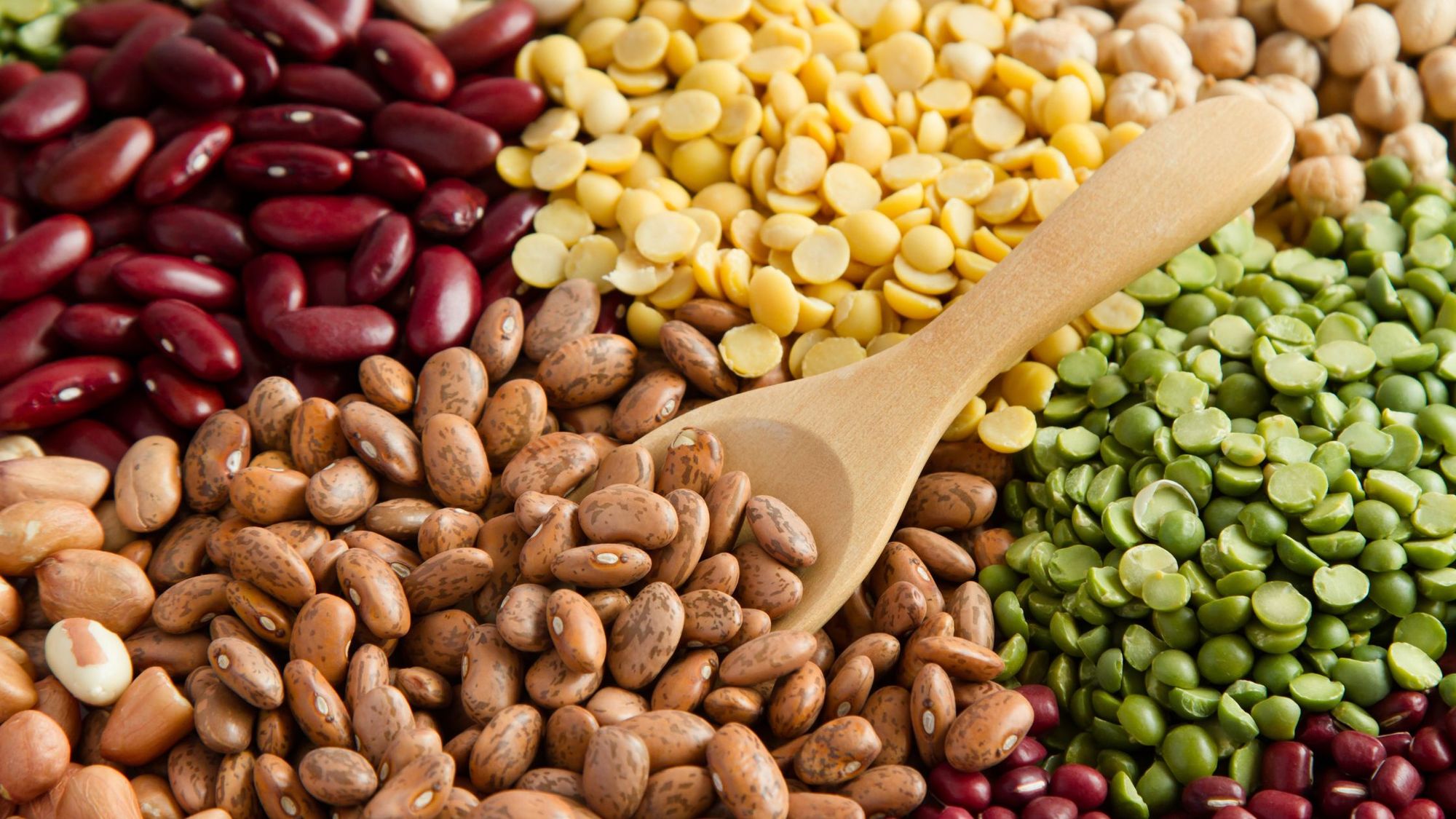
You may be wondering if there are foods that make you feel full longer, so that you don’t feel the urge to indulge in late-night snacking. Researching foods that make you feel full longer is a common query for people who are on a health kick or on a weight loss journey, since they aim to eat less calories and snack on junk food less. Even those who want to maintain their current healthy weight and remain physically fit wish to know which nutritionally-dense foods are known to curb junk food cravings.
Increasing your knowledge on these nutritious, filling and satisfying foods will help you make better food choices. Otherwise, you may end up feeling hungry all the time if you choose empty-calorie meals and snacks. In turn, this could cause much stronger cravings for junk food and other snacks. If you’re serious about wanting to curb late-night snacking, you can do it by eating healthy foods that make you feel full longer.
Scientific research shows that foods that make you feel full longer don’t just ward off hunger, but also help you eat less at your next meal.
Incorporating nutrient-rich, filling foods in your diet will help you lose weight and help you maintain a healthy weight in the long run.
The Rationale Behind Foods That Make You Feel Full Longer
If you’re wondering why there are some foods that make you feel full longer, the answer lies in the satiety index. Satiety is a term that explains the feeling of fullness after eating. A study in 1995 tested 38 foods with 240 calories per serving. Some foods ranked higher in terms of satisfying hunger and were also considered more filling. For instance, a boiled sweet potato ranks higher than a croissant, which makes sense because the former has more fiber while the latter has more fats and air. Thus, the researchers concluded that high-index foods helped people eat fewer calories overall.
However, it is important to note that just because a particular food keeps you full for a longer time, it doesn’t automatically mean that it is nutritionally dense.
In general, foods that make you feel full longer have the following characteristics:
- High protein: Evidence suggests that this is a filling macronutrient because it takes longer to digest. It also affects the satiety hormones like ghrelin and glucagon-like peptide 1.
- High fiber: Fiber adds bulk to your tummy and keeps you full for longer by slowing down the emptying of the stomach since there is an increased retention time of food in the tummy.
- Healthy fats: Plant-based monounsaturated fats like avocado and omega-3 fatty acids in salmon affect satiety. Healthy fats regulate the release of appetite hormones and slow down the speed at which the stomach empties in digestion.
- High volume: Some foods just contain a lot of water and air, which may keep your stomach full. A perfect example of this is watermelon.
- Low energy density: Low energy density foods are very filling because they contain a lot of fiber and water while being low in fat and calories for their weight. Hence, you can eat more of them without guilt.
- Whole foods: In general, unprocessed foods that are still close to their whole form are more filling than processed foods.
7 Foods That Make You Feel Full Longer and Deter Late-Night Snacking
Hunger pangs are one of the body’s ways of telling you it must replenish its nutrients and energy. And the best foods to quell hunger are nutrient-dense. If you wish to satisfy a ravenous stomach and increase fullness, you need nutritious, filling foods that are great for overall health.
Below are 7 filling, nutritious and satisfying foods that help prevent-late night snacking by leaving you feeling fuller for longer.

Boiled or Roasted Sweet Potatoes
Instead of regular potatoes, reach for sweet potatoes because they contain more complex carbohydrates. Usually, potatoes are the king at meal times in the form of mashed potatoes, baked potatoes, hash browns, and french fries. Now is the time to put the spotlight on its cousin and make sweet potato side dishes for your breakfast, lunch, or dinner. The best thing about this is it can be eaten stand-alone or the way it is. Sweet potatoes just taste great and they’re very satisfying.
A small sweet potato has 86 calories and 21 grams of net carbs. Because it is chock full of soluble and insoluble fiber, it takes longer to digest and keeps you full. These are also packed with vitamins a and c, along with potassium. If you’re concerned about weight loss, a boiled or roasted sweet potato is the most nutritionally dense because you don’t add any oil during the cooking process.
2. Hard Boiled Eggs
Eggs have gotten a bad rap for their cholesterol content. However, eggs are rich in high-quality protein. A large egg contains 6 grams and nine essential amino acids, making it very filling. In fact, one study found out that those who consume eggs for breakfast experienced less hunger and ate less during their next meal.
Moreover, eggs also contain antioxidants called zeaxanthin and lutein, which fight free radicals and protect eye health. If you’re looking for a good snack to prevent nighttime munchies, make a batch of hard-boiled eggs because these keep well in the fridge for up to 7 days. You can just put them in hot water if you don’t wish to eat cold eggs.

3. Beans and Legumes
If you’re looking for an excellent source of fiber and protein, beans and legumes are the answer. These humble ingredients are lean and healthy plant-based protein sources. They belong to the list of foods that make you feel full longer because one-half cup of beans and legumes provides 6 grams of fiber and 7 grams of protein. It’s easy to see why they’re satisfying and filling. If you’re looking to incorporate these raw ingredients in your menu planning, you can try them in the following:
- Salads
- Soups
- Stews
- Sandwiches
- Pureed into dips
4. A Mug of Overnight Oats
Oats have always been known to be low in calories and fats. They’re also a great source of soluble fiber, especially the less processed version like steel-cut oats. These grains can soak up water, so they definitely belong to the list of foods that make you feel full longer.
On top of that, research shows that oatmeal could help increase satiety-related hormones and delay the emptying of your stomach. If you’re serious about curbing calories, you can make overnight oats with steel-cut oats and a low-carb milk like coconut milk, instead of the microwaved instant version with tons of added sugar. You can just top it off with nuts and fruits to boost the flavor and nutritional content. And let’s not forget that these add-ons are also satisfying foods that make you feel full longer.
5. Plain Avocado
Some call the avocado the king of healthy fats, which helps in making you feel satiated for a long time. These good fats come with the bonus of increasing your good cholesterol, which protects against cardiovascular disease. It also doesn’t hurt that they have low carb content but tons of fiber. This is an excellent ingredient for those who are following the keto or low-sugar diet because it keeps insulin levels stable and staves off cravings. More importantly, it has a lot of nutrients like:
- Vitamins B6
- Vitamin C
- Vitamin E
- Vitamin K
- Potassium
- Riboflavin
- Niacin
- Folate
- Magnesium
- Pantothenic acid.
Avocado is clearly a nutritionally-dense food that belongs to a balanced diet. If you want to feel fuller in between meals, add this humble fruit to your salads, sandwiches, sushi rolls, wraps, and rice bowls. And it also doesn’t hurt to store this in your pantry because it’s a healthy option that’s easy to eat as a snack on its own. Avocado also freezes well if you need an add-on for smoothies.
6. Greek Yogurt
Ditch the thin regular yogurt and opt for thicker Greek yogurt when you’re searching for foods that make you feel full longer. Many eat this as a breakfast option but it’s also a great snack to keep you full until the next meal because it has higher protein content.
One study conducted in 2013, showed that those who consumed high-protein Greek yogurt compared with those who had the regular variant were less hungry and felt full the longest. If your stomach is grumbling post-dinner, this is a convenient healthy snack to have in your fridge. You can top it off with nuts, avocado, and low-sugar granola to increase the fiber content and amplify the satiety index.
7. Plain Unsalted Nuts
Go nuts over nuts and stock them in your pantry if you want an arsenal of foods that make you feel full longer within your reach. These nuts are great add-ons for your dishes to help tide you over between meals. You can add nuts to your salads, oatmeal, pasta, smoothies, yogurts, sandwiches, and so much more. They’re a very versatile ingredient that promotes satiety while maintaining blood sugar levels. The following nuts are particularly heart-healthy and high in omega-3 fatty acids:
- Walnuts
- Almonds
- Hazelnuts
- Cashews
- Macadamia nuts
- Pecans
- Pistachios
The reason nuts have a high satiety index score is they’re rich in protein, healthy fat, and fiber. They’re also loaded with vitamins, minerals, and antioxidants that support overall wellness. If you’re conscious of your health, it would be best to pick unsweetened and unsalted nuts. Be sure to read the nutritional labels per serving size because it’s easy to just keep on munching on these small nuts mindlessly and forget your loading up on calories and fats..
Which Foods Should You Incorporate into Your Diet?
An individual’s diet is such a personal thing that in part hinges on culture, preferences, nutritional goals, and sensitivities. What may work for one person may not necessarily work for you. For example, those following the Keto diet can consume healthy fats like nuts and avocados because they’re low in carbs. However, this may be problematic for someone with a cholesterol imbalance.
By the same token, although nuts are foods that make you feel full longer, you may not be allowed to consume some of them due to a nut allergy. That’s why it’s important to find out what your food sensitivities are. You could also be suffering from an intolerance to certain elements like gluten, which could cause an upset stomach, bloating, and nausea.
As always, before trying new foods or embarking on a new diet, it’s important to check with your primary care doctor. You can also consider a CircleDNA test to determine if you have certain food sensitivities or higher needs of certain nutrients. This at-home test comes with over 500 plus reports.
Apart from ancestry information and genetic health risk reports, CircleDNA can also help determine which diet plan you’re most genetically compatible with.
With reports based on your unique genetic makeup, you can plan your meals better and maximize your results.
References:
- Optimising food for satiety (Lucy Chambers et.al.) https://www.sciencedirect.com/science/article/pii/S0924224414002386
- Satiety index of common foods (SH Holt et.al) https://pubmed.ncbi.nlm.nih.gov/7498104/
- Increased Dietary Protein as a Dietary Strategy to Prevent and/or Treat Obesity (Heather J. Leidy) https://www.ncbi.nlm.nih.gov/pmc/articles/PMC6179508/
- The Role of Fiber in Energy Balance (Astrid Kolderup Hervik & Birger Svihus) https://www.ncbi.nlm.nih.gov/pmc/articles/PMC6360548/
- Energy Intake and Satiety Responses of Eggs for Breakfast in Overweight and Obese Adults—A Crossover Study (Jennifer B Keogh & Peter M Clifton) https://www.ncbi.nlm.nih.gov/pmc/articles/PMC7432073/
- The Golden Egg: Nutritional Value, Bioactivities, and Emerging Benefits for Human Health (Sophie Réhault-Godbert) https://www.ncbi.nlm.nih.gov/pmc/articles/PMC6470839/
- Dietary fiber and satiety: the effects of oats on satiety (Candida J. Rebello) https://www.ncbi.nlm.nih.gov/pmc/articles/PMC4757923/Low, moderate, or high protein yogurt snacks on appetite control and subsequent eating in healthy women (Steve Douglas et.al.) https://pubmed.ncbi.nlm.nih.gov/23022602/






Comments are closed.